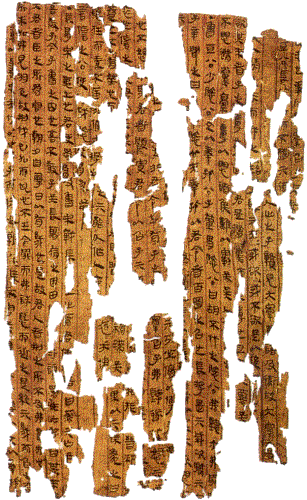I Ching, Yijing or Zhou Yi
"Oracle of the moon": © 2000 LiSe
 Yi Jing, Oracle of the Moon
Yi Jing, Oracle of the Moon

Finds of old Yi-manuscripts
The book Zhouli 周禮, which describes the various state offices, speaks of three different types to handle the "changes", namely the methods Lianshan 連山 "connecting mountains" (a forgery?), Guicang 歸藏 "Return to the storehouse" or "Return to womb and tomb", and the "Zhouyi", the change method of the Zhou people. The two first methods are unknown, except for a few surviving fragments recorded in Ma Guohan's 馬國翰 collectaneum Yuhanshanfang jiyi shu 玉函山房輯佚書. Some interpreters bring forward the argument that the word zhou does not refer to the Zhou dynasty, but to a kind of "circle" that encompasses all sixty-four hexagrams. (from "Chinaknowledge")
The oldest is the lianshan 連山 "connecting mountains", and it is said to start with the hexagram double-mountain, in the Yi hex. 52.
The second one is the Guicang 歸藏 "storehouse" or "return to tomb" or "return and be contained", (or occasionally called Guizang), starting with Kun, in the Yi hex. 2.
The last one is the Zhou Yi, the "Zhou Changes" or "Encompassing circle Changes", or Yi Jing (I Ching), "Classic of Changes".
One legend says, the Xia had Mountains as starting hexagram, the Shang made the Yi start with hex.2, but when the Shang were overthrown by King Wen, he made hex.1 the starting hexagram, "revealing the rise of Zhou".
Click the titles below for more information.
The Mawangdui YiJing

In 1973, at Mawangdui, an YiJing-text was unearthed, written on a piece of silk, 48 cm. wide and 85 cm. long. It dates probably from 190 BC.
I don't think it is actually older than the received text. The 'version' might be, but the recieved text relies on a tradition, this one was probably made by one person. An YiJing "of its time" back then.
The Wangjiatai Guicang

Book of bamboo slips, 200 AD